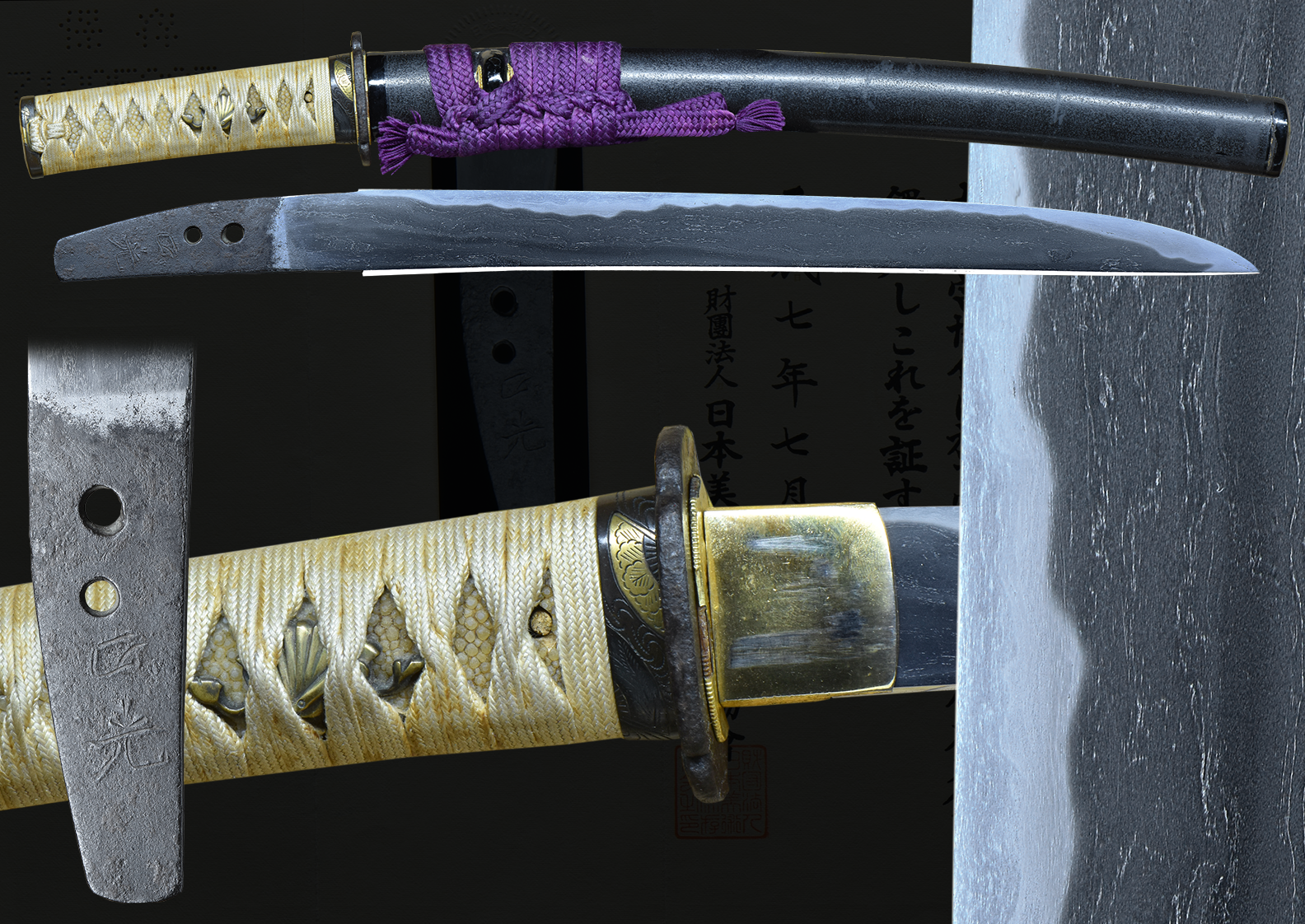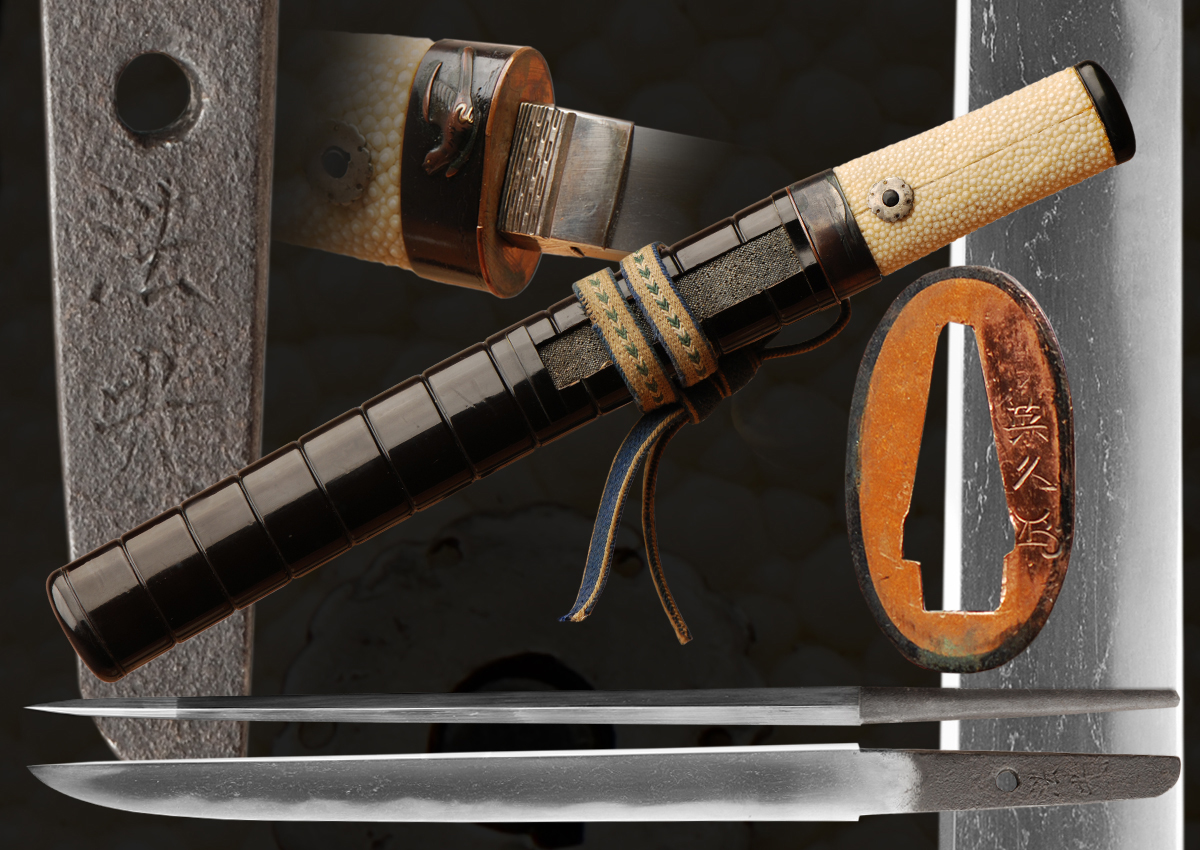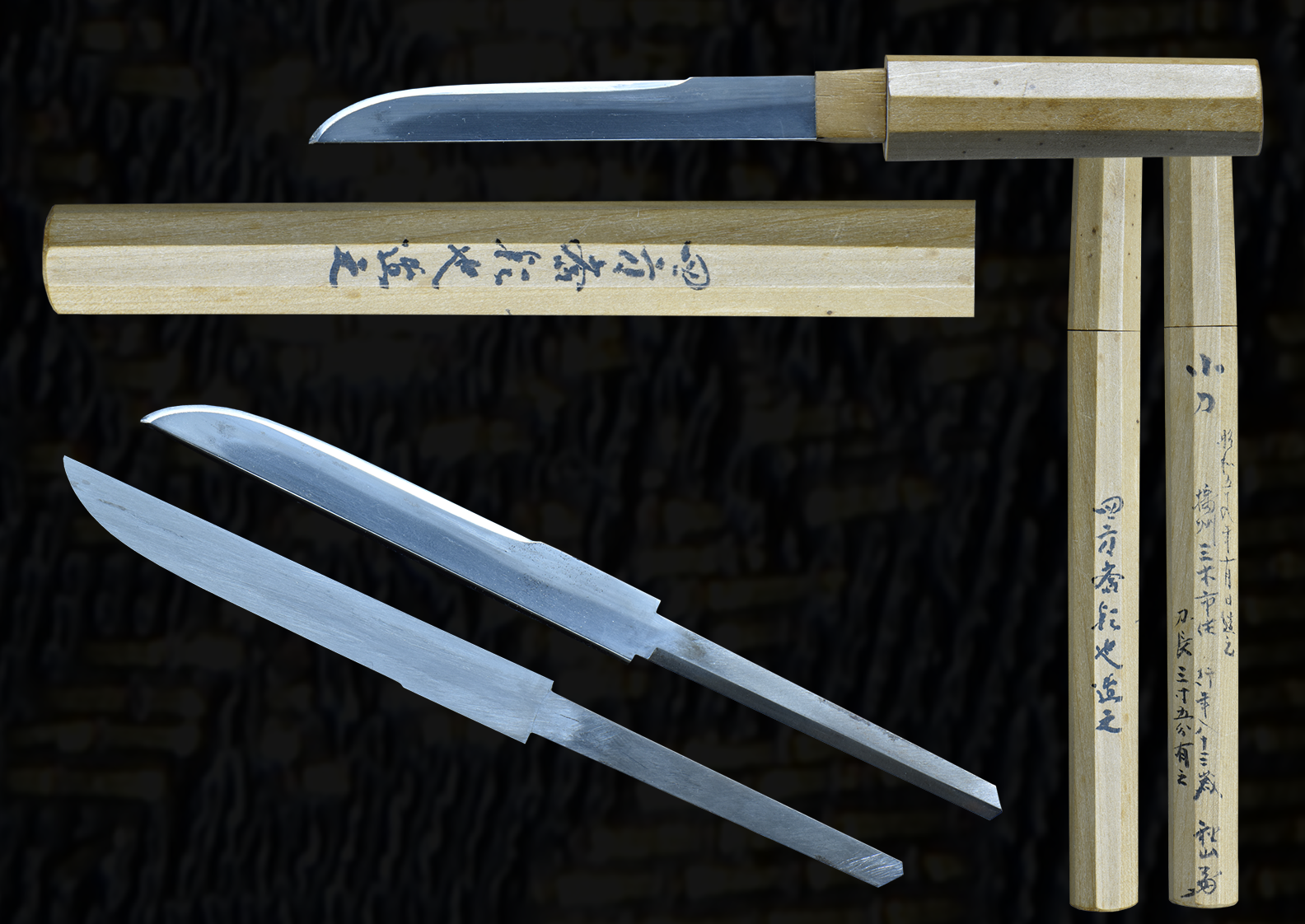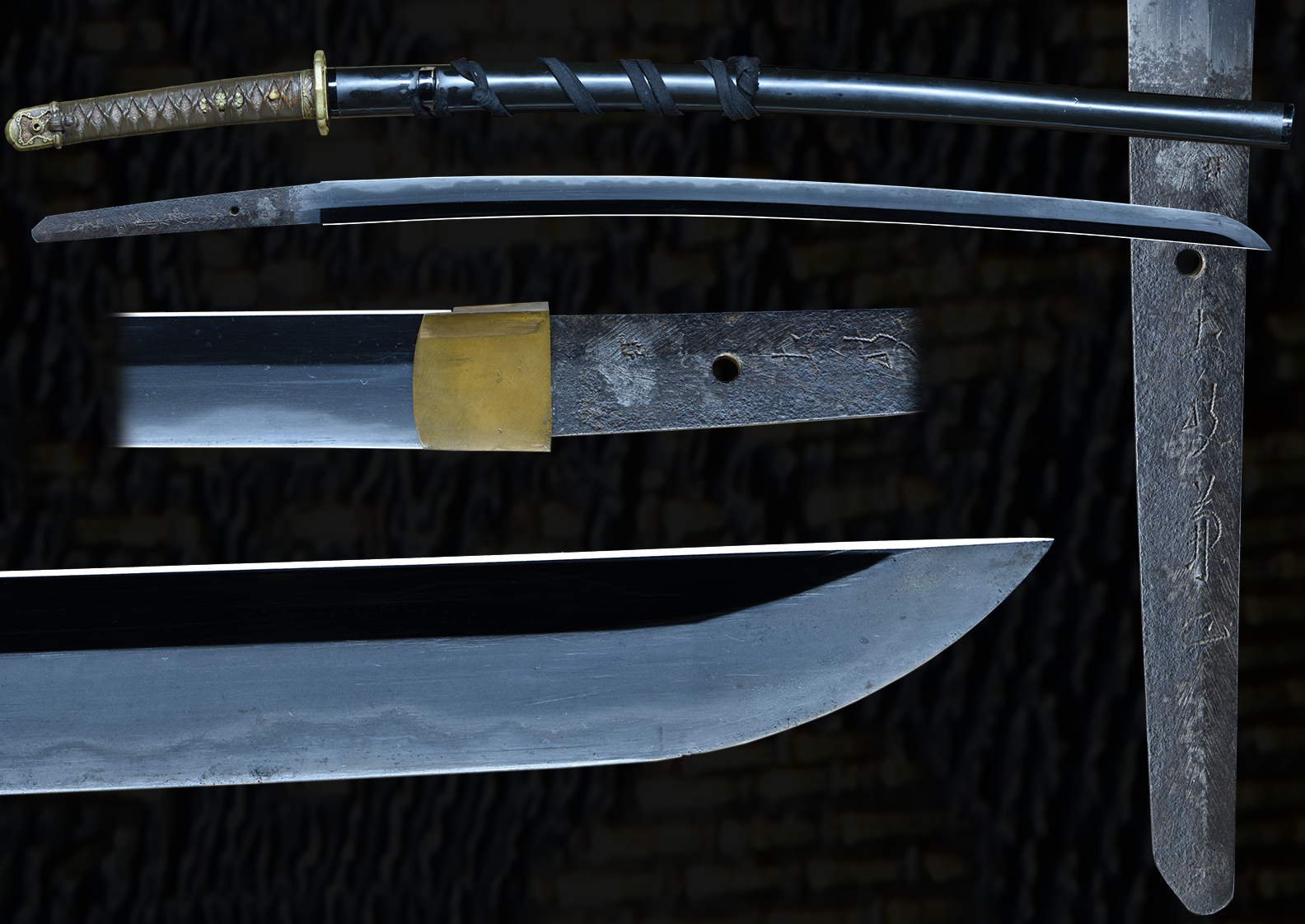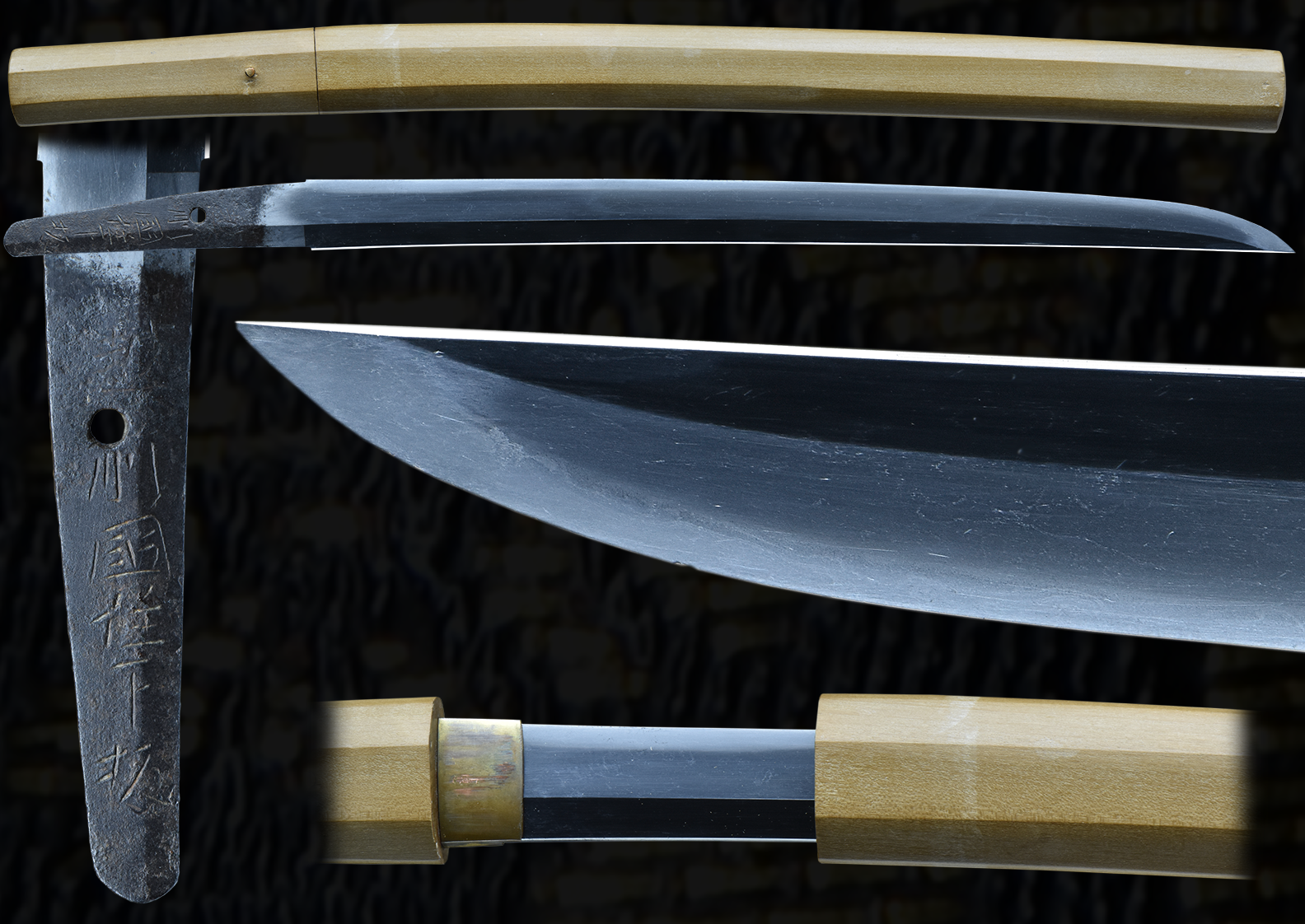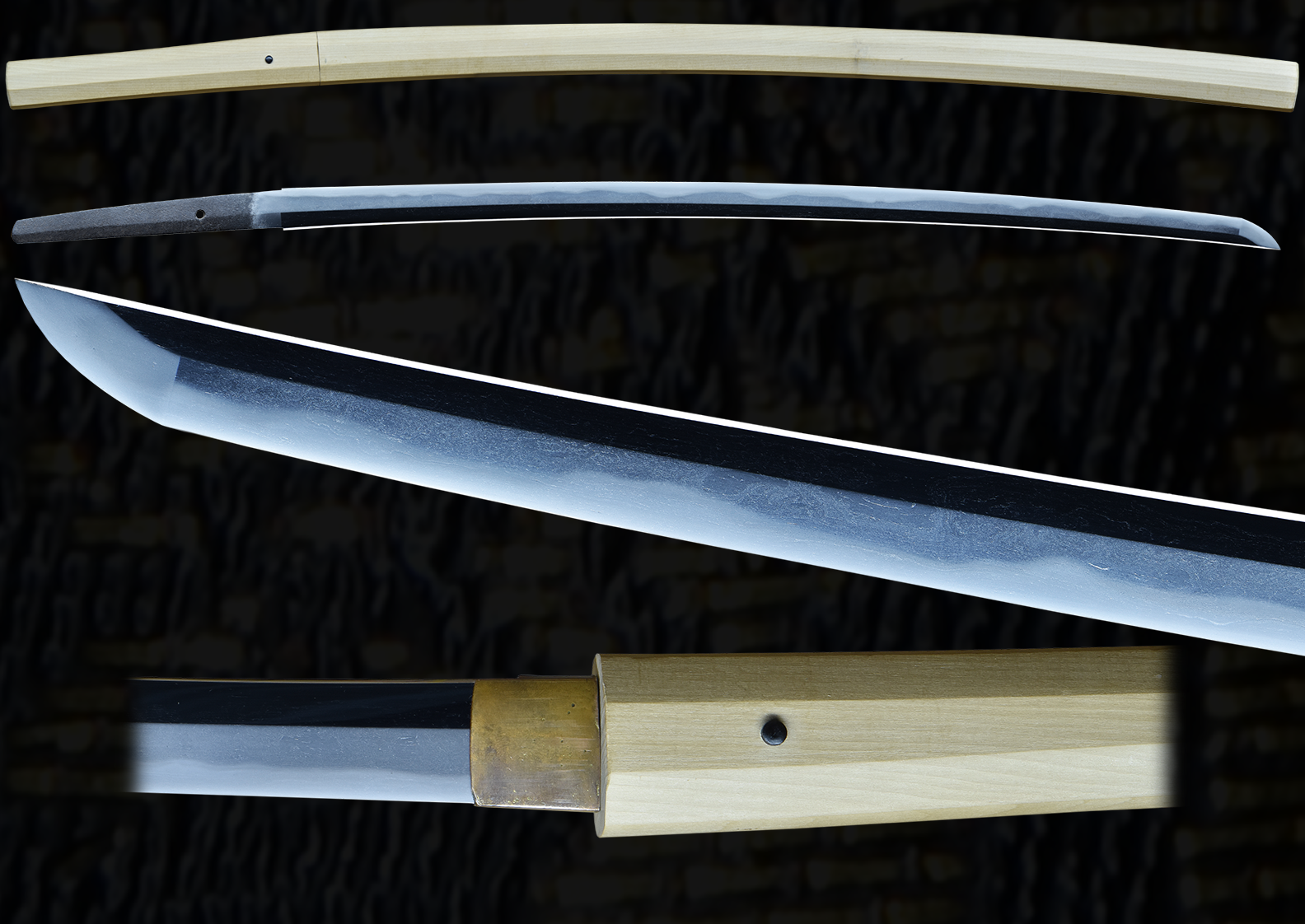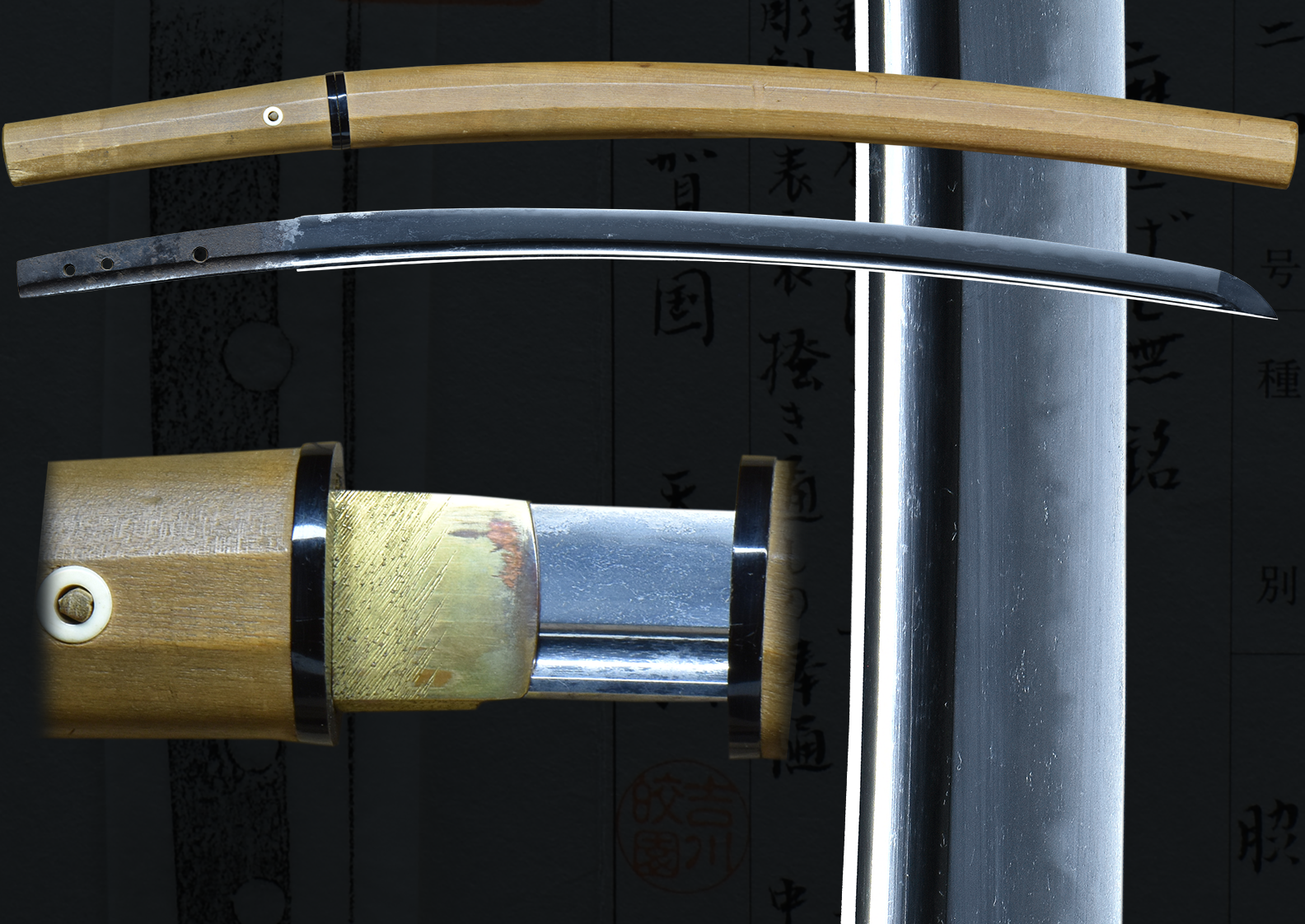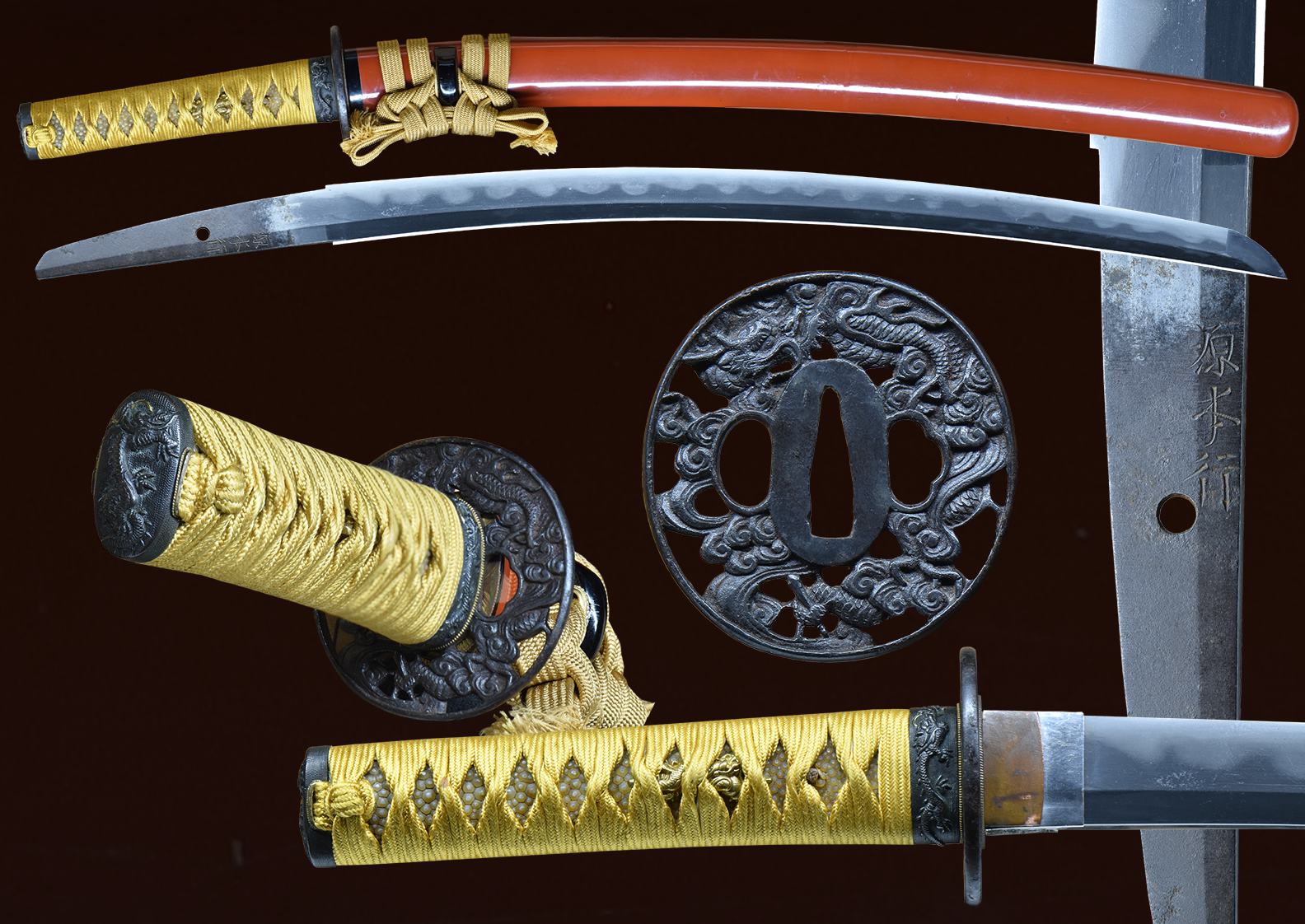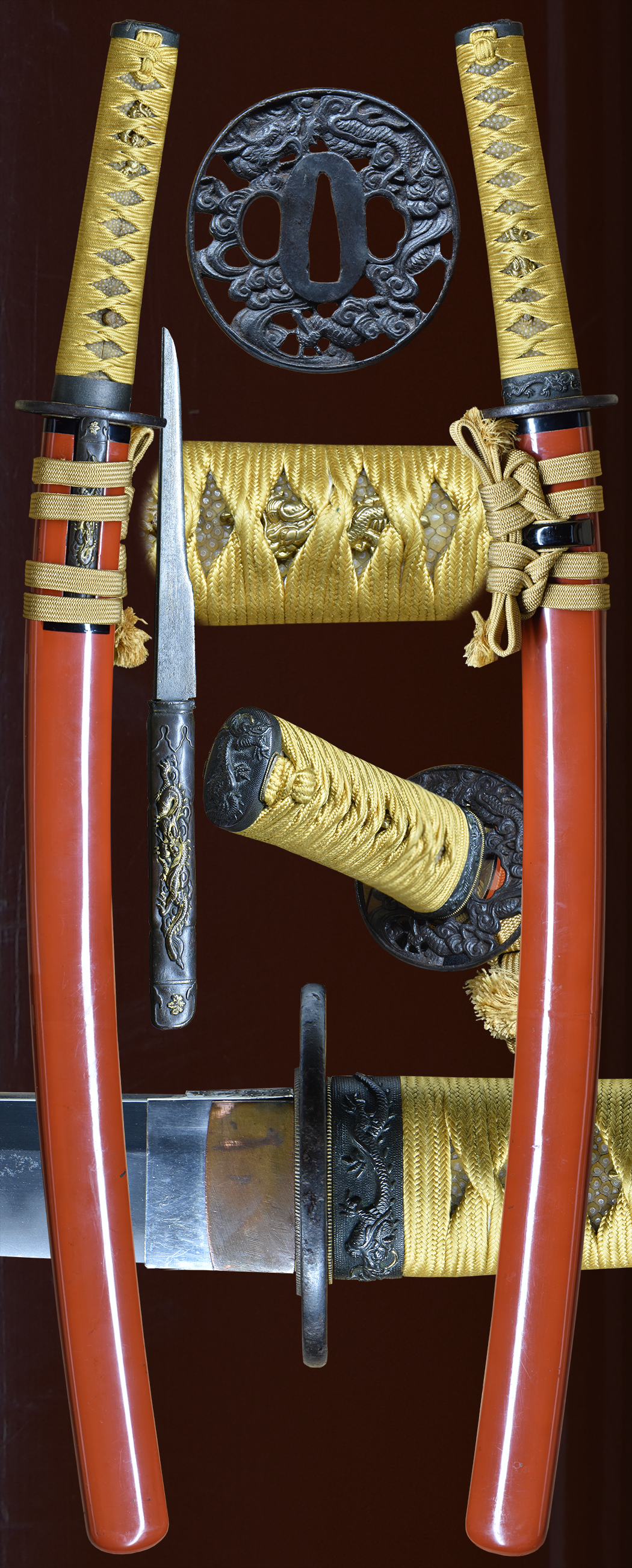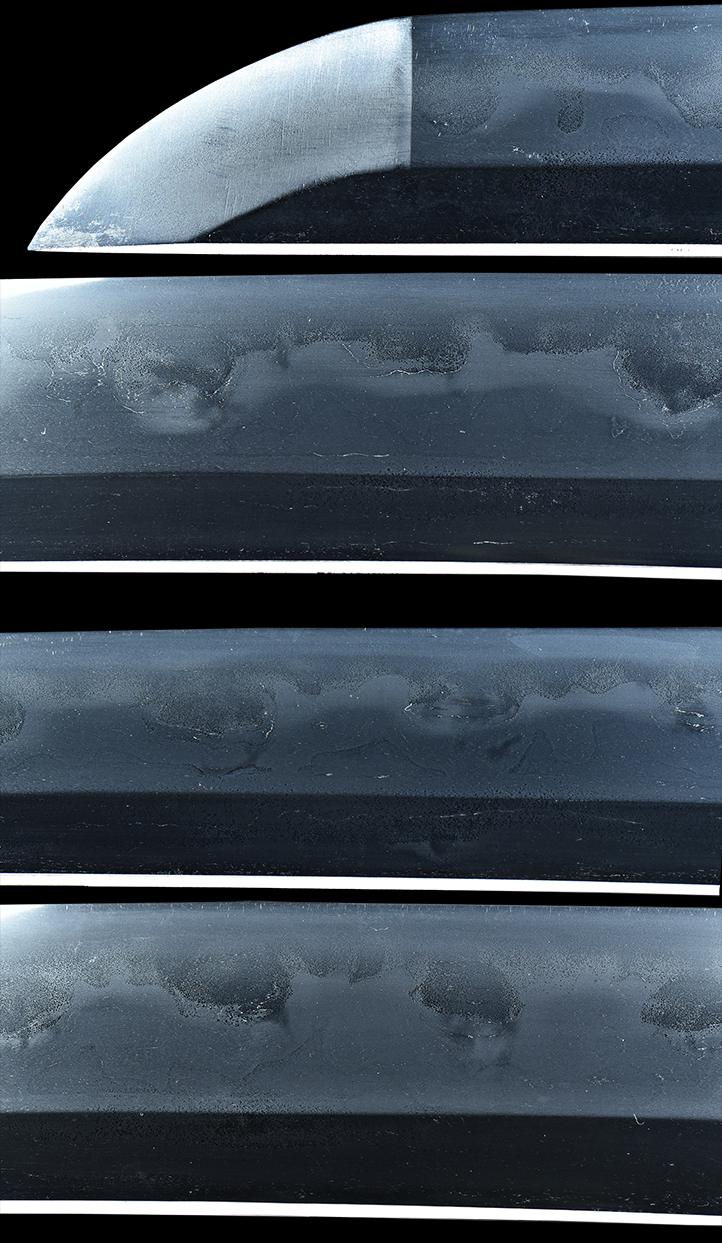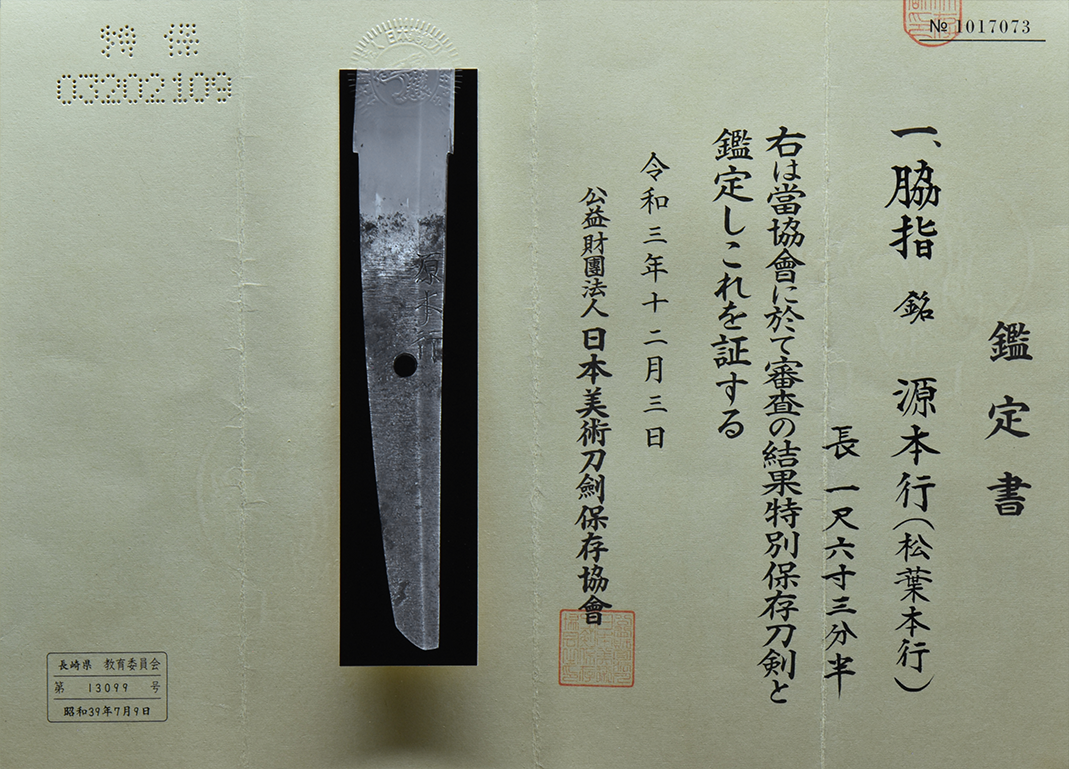Antique Japanese Sword Signed by Motoyuki with Tokubetsu Hozon Certificate
Fujishiro’s book:
MOTOYUKI MATSUBA [TENNA 1681 BUNGO] SHINTÔ CHÛJÔSAKU
He is called Bungo Yukihira no Gosai, he signed YUKIHIRA, and later MOTOYUKI. He is also called Bungo Tarô, and he later lived in Hizen Karatsu.
BUNGO TARÔ MOTOYUKI HACHIJÛSANSAI SAKU, Made at age 83.
KISHIN DAYU MI KAWACHI NO KAMI MINAMOTO YUKIHIRA
HIZEN KARATSU JÛ KAWACHI NO KAMI MINAMOTO MOTOYUKI
Because the “MOTO” of the MOTOYUKI in his twilight years is made in the shape of pine needles (MATSUBA), he has the different name of MATSUBA MOTOYUKI.
He first signed as Yukihira(行平). He believed that he was a descendant of Kishin Dayu Yukihira(紀新大夫行平), a famous swordsmith in Bungo province during the late Heian-early Kamakura period(Late12th-early 13th century).
He was born in the 19th year of Kan-Ei era(1642). At the beginning of his career, he stayed in Takada village, Oita prefecture. And he moved to Karatsu city in Saga prefecture when he was 35 years old(the 5th year of Enpo era: 1676). At around the same time, he received the honorable title of Kawachi Daijyo(河内大掾).
In the seventh year of Genroku era(1694), he moved to Edo city and received a new maker’s name Motoyuki(本行) from Hon Ami school and then officially changed his maker’s name to Motoyuki(本行). Hon-Ami school has been trusted official Japanese sword polishers/appraisers since 1596(Late Azuchi Momoyama period). This fact indicates prestigious Hon-Ami school acknowledged his ability to forge high-quality swords.
During the same time, he often visited Kamakura city to master SOSHU style swords from the master named Tsunahiro. SOSHU style, also known as SOSHU DEN, is one of the most traditional Japanese sword-forging methods developed in SOSHU area(Today’s Kanagawa prefecture).
Motoyuki moved back to Karatsu city after mastering Soshu style technique. There is a record of him forging a sword when he was 83 years old. It is said that he called himself Bungo Taro. Bungo is the area Karatsu city is located. He was also called Hige Kawachi, which came from the fact that he had a nice bear. In addition, at the end of his career, he was also known as Matsuba Motoyuki. How he signed the letter 本(Moto) was distinctive during this time, and it resembled Matsu(Japanese pine needles).
The smith’s name Motoyuki lasted 4th generations, and the first-gen Motoyuki forged this blade. The blades forged by the first-gen Motyuki are pretty popular among Japanese sword collectors in Japan. His passion for improving his artistry is beyond our imaginations. By moving places and learning from different masters, he reached the pinnacle of craftsmanship.
This blade is appraised as Tokubetsu Hozon certificate issued by NBTHK. This authentication paper was only given to Japanese swords, especially worth preserving by Nihon Bijutsu Touken Hozon Kyokai(the Society for the Preservation of the Japan Art Sword).
This sword is mounted in suite of Dragons. The saya is lacquered red. The tsuka-ito and Sageo are gold to match. The Fuchi/Kashira and menuki are of Dragons and the Tsuba is Sukashi style and of a dragon also. The Kodzuka is also a dragon. A well mounted, papered sword by Motoyuki.
- Mei: Minamoto Motoyuki
- Date: Edo (1600’s)
- Nagasa: 19-1/2 inches
- Sori: 19.0 mm
- Width at the ha-machi: 31.3 mm
- Width at the yokote: 21.5 mm
- Thickness at the mune-machi: 6.6 mm
- Construction: Shinogi zukuri
- Mune: Iori
- Nakago: Ubu
- Kitae: Itame/mokume
- Hamon: Midare Gunome some hitatsura
- Boshi: Maru
- Condition: Good polish
Original asking price: $ 5,800.00 New Special price $4,500.00
(shipping and insurance included)
Email us if your interested in this item and remember to include the order number for this item: fss-932.
Click to Enlarge Image
Click to Enlarge Image
NBTHK TOKUBETSU HOZON
For Sale
